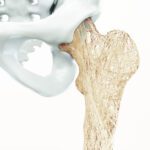Osteoporosis is a chronic and progressive condition characterized by reduced bone density, which increases the risk of fractures. According to the International Osteoporosis Foundation (IOF), osteoporosis affects approximately 200 million women worldwide, and one in three women over the age of 50 will experience an osteoporotic fracture. Osteoporotic fractures are associated with significant morbidity and mortality, as well as a substantial economic burden. Screening for osteoporosis can identify individuals at risk for fracture, allowing for early intervention and management of the disease. However, despite the availability of effective screening tools, osteoporosis remains underdiagnosed and undertreated. One reason for this is the limited access to bone density testing, especially in women who have had a fracture. Portable bone density scanners can address this gap by increasing the rates of osteoporosis screening for women who have had a fracture.
Although dual-energy X-ray absorptiometry (DXA) is an excellent standard for measuring bone density and diagnosing osteoporosis, there are drawbacks that constrain its access. DXA machines are expensive, large, and require specialized personnel to operate. This limits their availability and accessibility, particularly in rural or low-income areas. In contrast, portable bone density scanners are smaller, more affordable, and easier to operate. These devices use ultrasound waves to measure bone density at peripheral sites such as the heel, wrist, or finger, and they’ve been shown to be effective in identifying individuals at high risk for fractures.
One population that could benefit from a portable bone density scanner is women who have had a fracture. Fractures are a major risk factor for future fractures, and up to 50% of women who experience a fracture do not receive appropriate osteoporosis management. This is known as the “fracture cascade,” where the first fracture leads to subsequent fractures due to untreated or undertreated osteoporosis. Fracture Cascade Prevention will Identify and treat osteoporosis early can prevent subsequent fractures and improve outcomes. Portable bone density scanners can identify women who have low bone density and are at high risk for subsequent fractures. This allows Fracture Cascade Prevention, early intervention and management, which can reduce the risk of future fractures and improve quality outcomes.
Several studies have demonstrated the effectiveness of portable bone density scanners in identifying women at high risk for fractures. In a study conducted by Leib et al., portable bone density scanners were used to screen women who had a fracture in the previous year. The study found that 58% of the women had low bone density at the heel, and 36% had low bone density at the wrist. Additionally, the study found that women who had low bone density at the heel were more likely to have a subsequent fracture within three years. Another study conducted by Cheng et al. found that portable bone density scanners were effective in identifying women who had a fracture and were at high risk for future fractures. The study found that women who had low bone density at the heel had a 1.7-fold increased risk of subsequent fractures compared to women with normal bone density.
Increasing the rates of osteoporosis screening in women who have had a fracture is important for improving quality outcomes and reducing unnecessary costs. Fractures are associated with significant morbidity and mortality, as well as a substantial economic burden. According to a report by the IOF, the total cost of osteoporotic fractures is estimated to be $320 billion annually worldwide. The majority of these costs are related to hospitalization and long-term care. Fracture Cascade Prevention with Early identification and treatment of osteoporosis can reduce the risk of subsequent fractures and improve outcomes, leading to a reduction in healthcare costs.
International Osteoporosis Foundation. Facts and statistics. https://www.iofbonehealth.org/facts-statistics. Accessed February 22, 2023.
Crandall CJ, Newberry SJ, Diamant A, et al. Comparative effectiveness of pharmacologic treatments to prevent fractures: an updated systematic review. Ann Intern Med. 2014;161(10):711-723.
Leib ES, Saag KG, Adachi JD, et al. Effectiveness of a semi-quantitative ultrasound device for fracture risk prediction: four-year follow-up of the Canadian Multicentre Osteoporosis Study. Osteoporos Int. 2011;22(12):3045-3055.
Cheng K, Cheng P, Tan KB, et al. Screening for osteoporosis in postmenopausal women with distal radius fracture: are portable bone densitometers enough? Osteoporos Int. 2005;16(8):914-920.
Watts NB. Diagnosis and management of osteoporosis in the long-term setting. Clin Cornerstone. 2006;8 Suppl 3:S7-S14.












